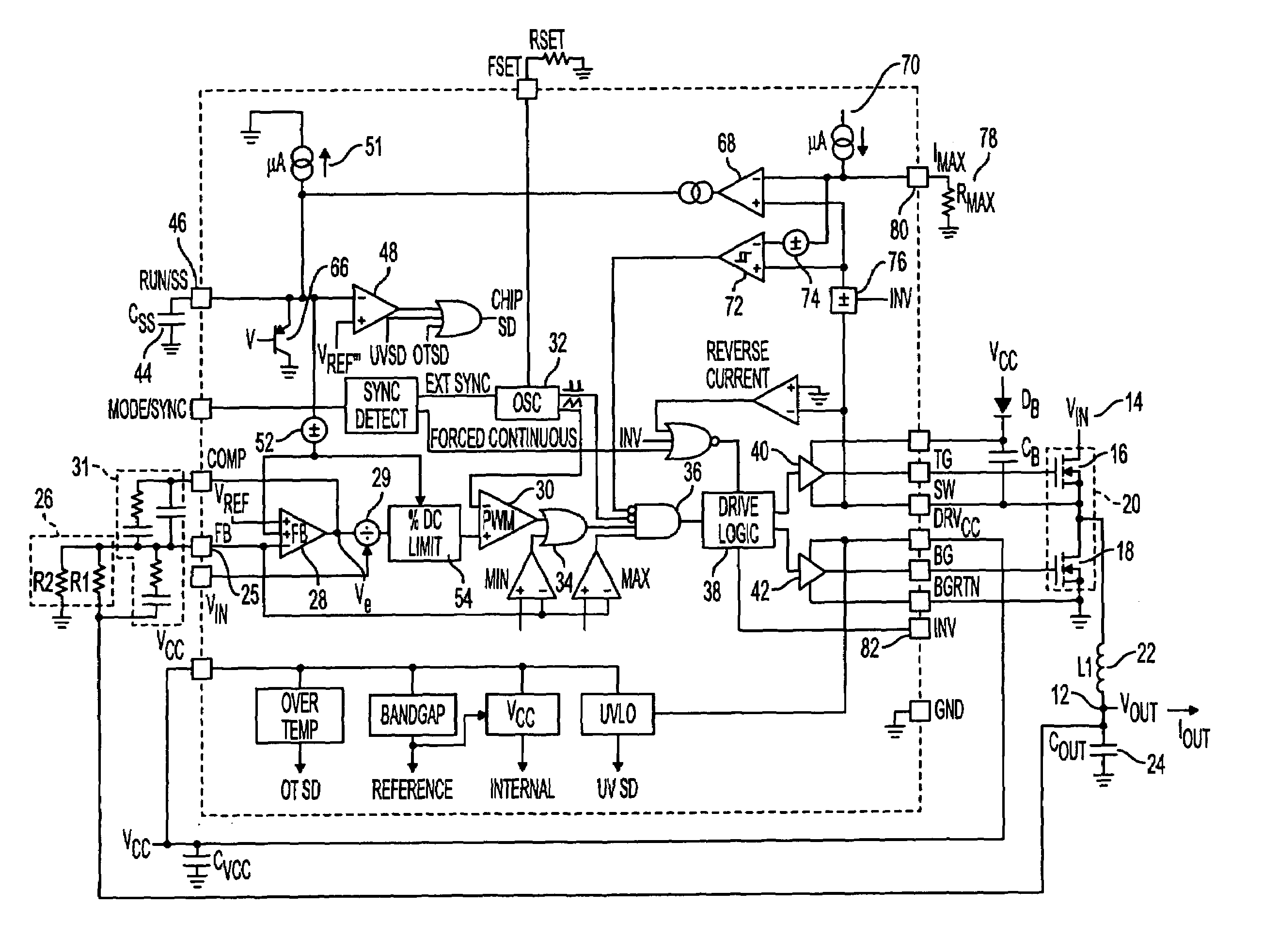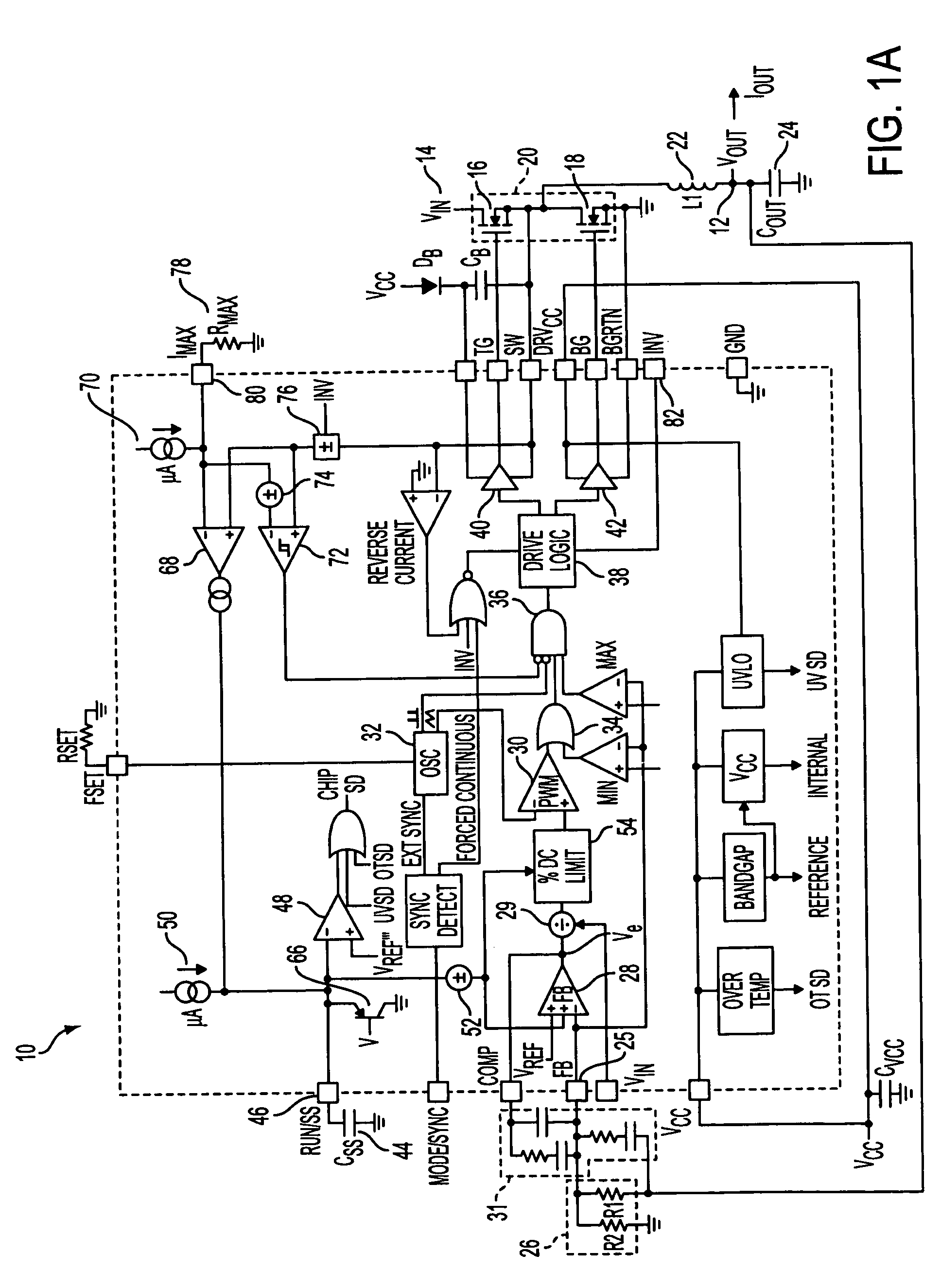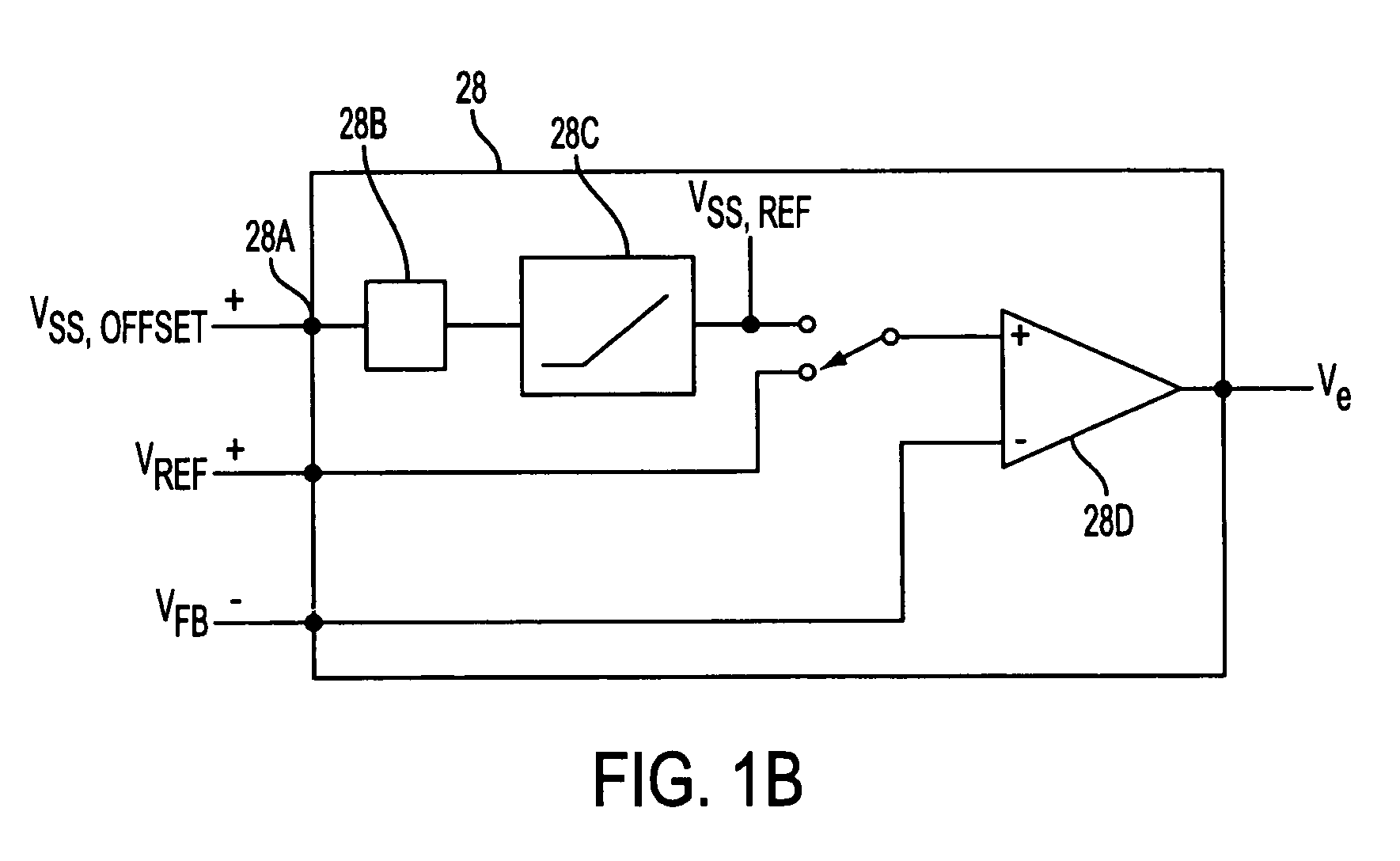Methods and circuits for programmable current limit protection
a technology of programmable current and limit protection, applied in the direction of power conversion systems, instruments, process and machine control, etc., can solve the problems of excessive current flow, delay in reducing the initial duty cycle, and potential damage to those components or loads
- Summary
- Abstract
- Description
- Claims
- Application Information
AI Technical Summary
Benefits of technology
Problems solved by technology
Method used
Image
Examples
Embodiment Construction
[0033]Referring to FIG. 1A, an illustrative synchronous voltage regulator that operates in either buck or boost mode is described, the voltage regulator incorporating an embodiment of the current limit protection circuit of the present invention. Operation of voltage regulator 10 in buck mode is described first.
[0034]Voltage regulator 10 operates from a supply voltage VIN, e.g., a battery, coupled to input terminal 14, and may be used to provide an output current at an output voltage VOUT within a desired range of a nominal regulated value at output terminal 12 for driving a load (not shown), e.g., a portable laptop computer or other battery-operated system, that is coupled to the output terminal. Output voltage VOUT is maintained at a regulated level by continuously and synchronously switching top-side MOSFET 16 and bottom-side MOSFET 18 of push-pull switch 20. In buck mode, top-side MOSFET 16 serves as the switch element that conducts inductor current when that current is ramping ...
PUM
 Login to View More
Login to View More Abstract
Description
Claims
Application Information
 Login to View More
Login to View More - Generate Ideas
- Intellectual Property
- Life Sciences
- Materials
- Tech Scout
- Unparalleled Data Quality
- Higher Quality Content
- 60% Fewer Hallucinations
Browse by: Latest US Patents, China's latest patents, Technical Efficacy Thesaurus, Application Domain, Technology Topic, Popular Technical Reports.
© 2025 PatSnap. All rights reserved.Legal|Privacy policy|Modern Slavery Act Transparency Statement|Sitemap|About US| Contact US: help@patsnap.com



